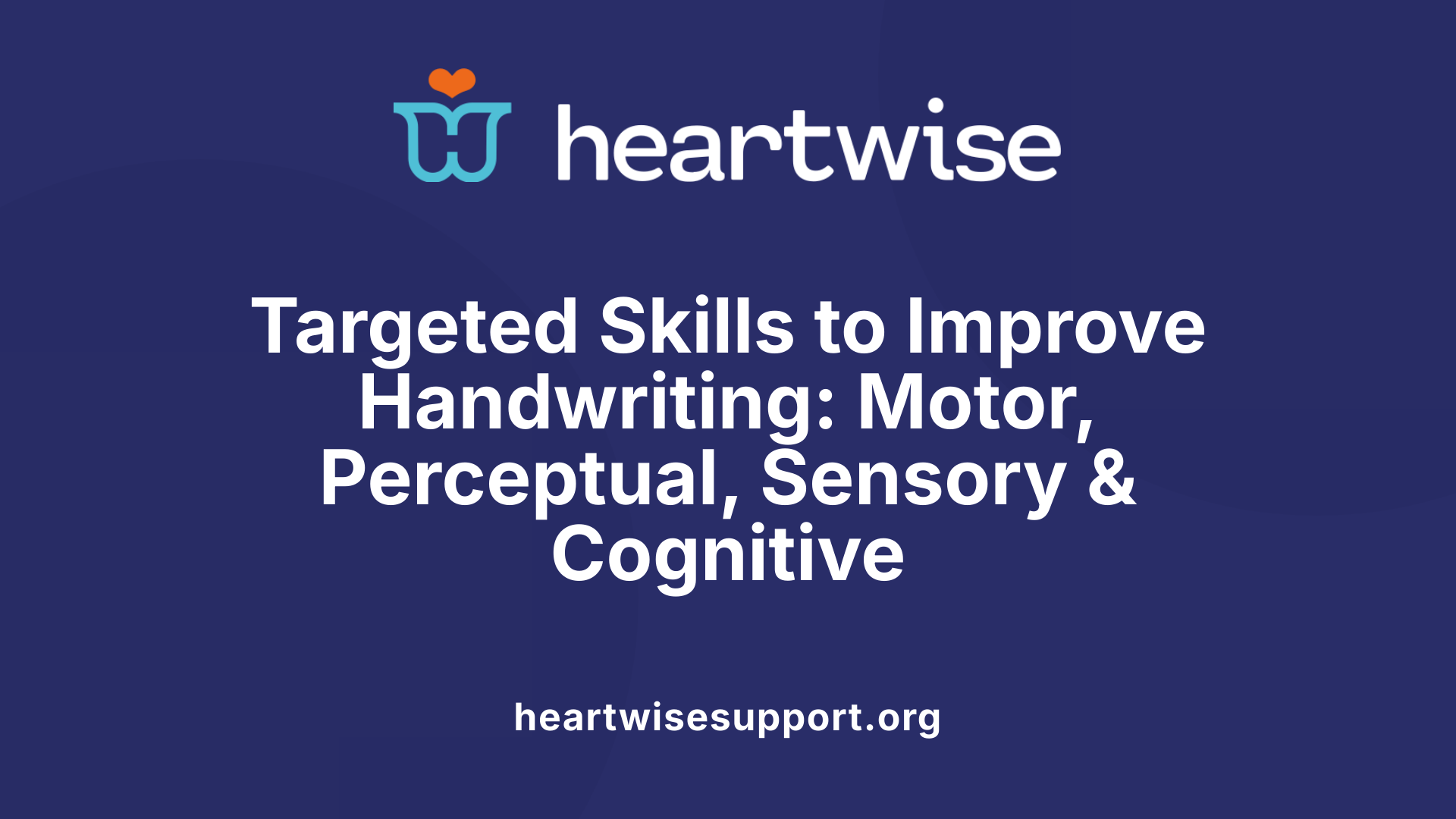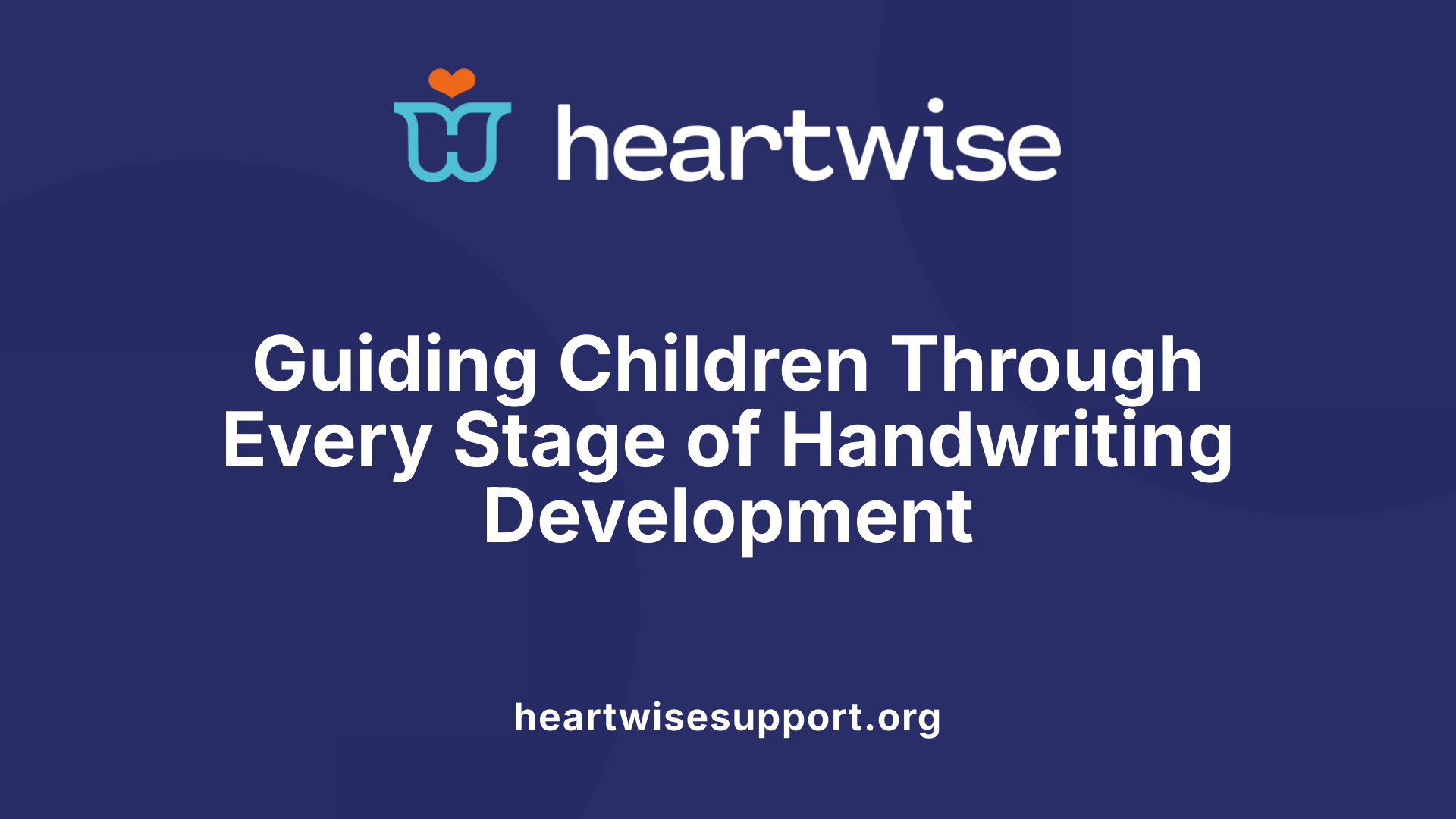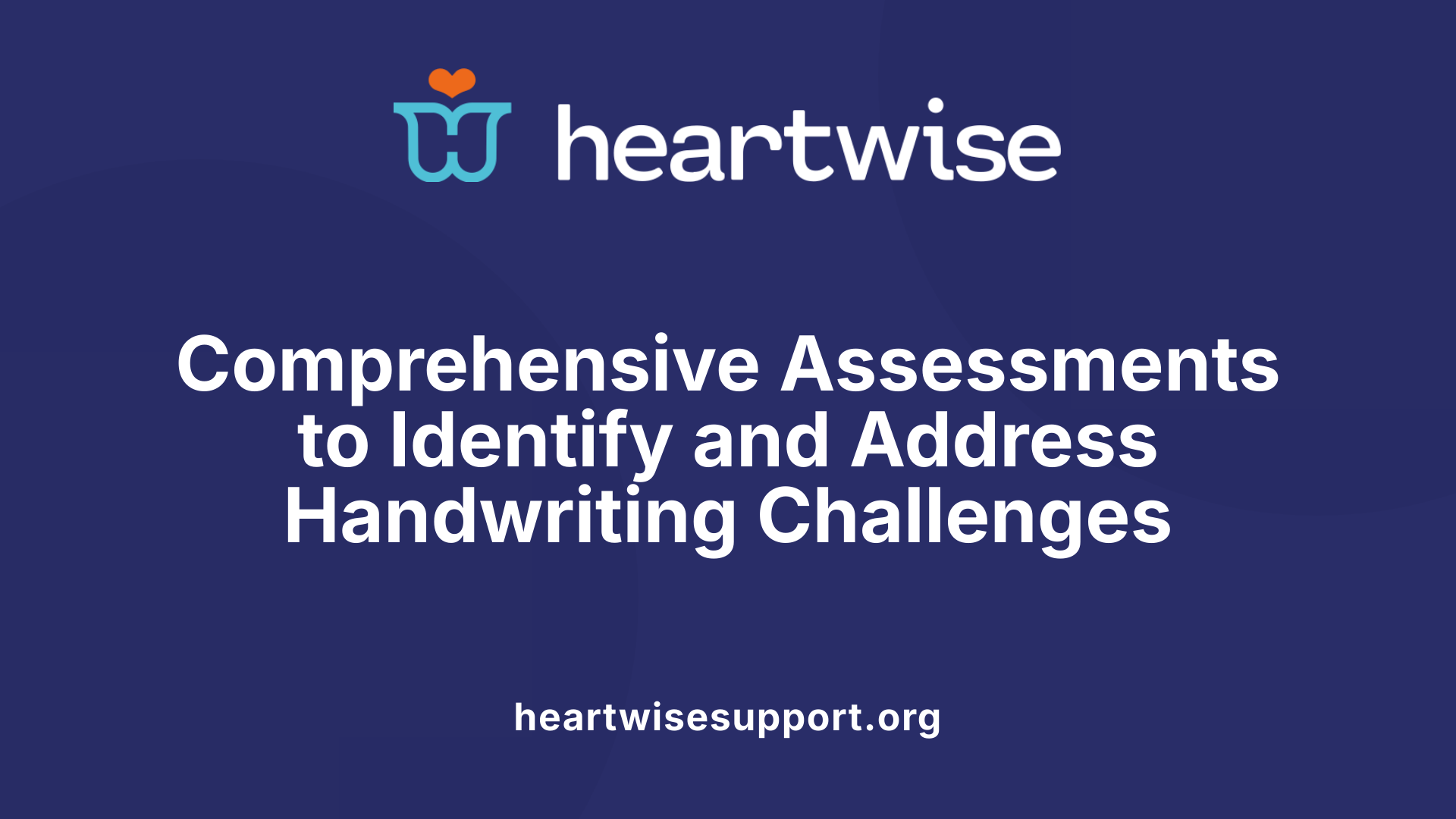Unlocking the Potential of Occupational Therapy in Handwriting Development
Handwriting remains a foundational skill essential for academic success and effective communication. Occupational therapy plays a pivotal role in addressing the multiple components involved in developing legible, efficient handwriting. This article explores how occupational therapists assess, plan, and implement strategies to improve handwriting skills, benefitting children across various developmental stages.
Understanding the Scope of Occupational Therapy in Handwriting Improvement
What are the roles and responsibilities of occupational therapists?
Occupational therapists (OTs) are specialized health providers dedicated to helping children overcome challenges with handwriting. They assess the child's current handwriting skills—including grip, letter formation, spacing, posture, and visual-motor coordination—to identify underlying issues. Based on this assessment, OTs design tailored intervention programs that incorporate a variety of activities and tools.
Their responsibilities extend beyond simple practice; they work on strengthening fine motor muscles through activities like threading beads, cutting with scissors, and manipulating clay. They address visual perceptual skills essential for letter discrimination and line awareness, including exercises that improve spatial understanding and letter reversals. Sensory strategies, such as tracing in sand or using sensory trays, help reinforce correct techniques and promote tactile learning.
In addition, OTs focus on fostering executive functions like attention, working memory, planning, and impulse control, which are crucial for organized and legible handwriting. They also educate parents and teachers on how to support handwriting development at home and in the classroom.
How do occupational therapists focus on underlying causes of handwriting difficulties?
Handwriting struggles often stem from deeper issues related to motor control, visual perception, sensory processing, or executive functioning. OTs examine these underlying factors through comprehensive assessments that include observation, standardized tests, and detailed histories. For example, poor pencil grasp might be linked to weak finger strength or inadequate hand proprioception.
Therapists target these core issues with specific exercises such as hand strengthening activities, visual-motor integration tasks, and sensory modulation techniques. They may teach children how to improve their grasp patterns using adaptive tools like pencil grips, or how to manage sensory sensitivities that interfere with writing, such as tactile defensiveness.
This focus ensures that interventions address not just the surface-level skill deficits but also the root causes, leading to more sustainable improvements in handwriting.
How is motor, perceptual, sensory, and cognitive skills integrated in therapy?
Successful handwriting development depends on the seamless integration of multiple skills. OTs utilize a holistic approach that combines motor training, perceptual exercises, sensory processing strategies, and cognitive development.
Motor components include exercises to enhance form, size, pressure, rhythm, and speed of writing. Visual perceptual skills involve tasks like letter discrimination, line awareness, and spatial organization. Sensory strategies incorporate activities that improve tactile processing and body awareness, such as tracing shapes in different textures or swinging on a therapy ball to boost proprioception.
Cognitive skills like planning, sequencing, and self-monitoring are strengthened through techniques like self-evaluation and using mnemonics. Practicing handwriting in multisensory formats — such as writing in sand, on chalkboards, or with sensory trays — helps engage all these domains simultaneously.
This integrated approach creates a more effective and individualized pathway for children to develop consistent, legible handwriting, fostering confidence and academic success.
| Skill Domain | Activities and Strategies | Impact |
|---|---|---|
| Fine Motor | Bead threading, cutting, clay manipulation | Strengthens hand muscles and dexterity |
| Visual Perception | Letter discrimination, line awareness, puzzles | Improves letter recognition and spatial skills |
| Sensory Processing | Tracing in textured materials, sensory bins, proprioceptive activities | Enhances tactile awareness and self-regulation |
| Cognitive Skills | Self-evaluation, sequencing, planning exercises | Develops organization and attention in writing |
How do these combined efforts improve handwriting?
By addressing the foundational skills, occupational therapists help children develop more control, accuracy, and consistency in their handwriting. This improvement boosts their confidence, enables better academic performance, and encourages creative expression.
Interventions like mastering tripod grasp, proper letter formation, and appropriate spacing are reinforced through multisensory, play-based activities tailored to each child's needs. The use of structured curricula such as Handwriting Without Tears fosters a stress-free learning environment, ensuring skills are acquired with understanding and ease.
Ultimately, integrating motor, perceptual, sensory, and cognitive components leads to more fluent, legible handwriting, which in turn supports overall school success and personal development.
Key Components Addressed by Occupational Therapy

What components of handwriting are addressed in occupational therapy programs?
Occupational therapy (OT) plays a crucial role in helping children develop and refine the various skills needed for effective handwriting. The therapy programs are designed to target a range of underlying components that contribute to legible and efficient writing.
One of the primary focuses of OT is on motor skills. This includes developing proper letter formation, establishing a stable pencil grasp, regulating pencil pressure, controlling writing speed, maintaining good posture, and promoting fluid hand movements. Activities such as threading beads, cutting with scissors, and playing with clay help strengthen small hand muscles and improve fine motor control.
Alongside motor skills, visual perceptual skills are essential for legibility. OTs assess and improve abilities like letter discrimination, spacing, alignment, and overall clarity of writing. These skills involve visual memory, spatial awareness, and the capacity to organize written work. Techniques like tracing shapes, dot-to-dot exercises, and sensory-based letter formation can enhance these visual-perceptual processes.
Sensory processing components also significantly influence handwriting development. Adequate body awareness, proprioception (sense of limb position), sensory regulation, and the ability to process tactile inputs are all integral. Therapists often incorporate sensory activities—such as tracing in sand, tracing in shaving cream, or using sensory trays—to help children better integrate sensory information and improve handwriting control.
Furthermore, executive functioning skills are vital. These include working memory, planning, organizing thoughts, sustaining attention during writing tasks, and self-monitoring. Strategies like self-evaluation, peer sharing, and structured routines help strengthen these cognitive skills, leading to more controlled and confident handwriting.
Occupational therapy programs are tailored to each child's unique needs, combining motor, perceptual, sensory, and cognitive interventions. By addressing these interconnected components, therapists help children overcome handwriting difficulties, enhancing their academic performance, self-esteem, and overall communication skills.
This comprehensive approach ensures that children develop the foundational skills necessary for neat, efficient, and confident handwriting, ultimately supporting their success in school and daily life.
Supporting Developmental Stages of Handwriting

How does occupational therapy support the stages of handwriting development?
Occupational therapy (OT) plays a crucial role in guiding children through the various phases of handwriting development. It uses tailored activities and interventions that are appropriate for each stage, focusing on strengthening the underlying skills necessary for effective writing.
In the pre-writing phase, the emphasis is on building foundational skills such as fine motor control, hand strength, and coordination. Therapists often incorporate fun, engaging exercises like coloring, tracing shapes, and sensory play with materials such as sand or clay. These activities help improve grasp patterns and develop the muscles involved in writing, ensuring children can control basic strokes.
Once children move into early writing, OT interventions shift towards proper letter formation and size. Visual cues, hand-eye coordination activities, and adaptive tools like pencil grips or lined paper support learning correct letter shapes and proportions. The goal at this stage is to help children produce recognizable and consistent letter forms.
As children transition to more advanced stages, the focus is on increasing writing fluency and developing a personal handwriting style. Therapists may incorporate writing games, sequential exercises, and activities that promote speed and consistency. These help children write more fluidly, with less fatigue and greater control.
Throughout all stages, occupational therapy offers a comprehensive approach by assessing each child's unique needs. Interventions target not only motor skills but also sensory integration, cognitive planning, and perceptual skills. This balanced focus prepares children for successful handwriting, boosting their confidence and independence.
Pre-writing skills and exercises
Pre-writing skills are the building blocks of effective handwriting. These include grasp patterns, hand strength, eye coordination, and wrist control. Activities like finger painting, tracing, and playing with objects that require pincer grip development are common.
Letter formation at early stages
Early letter formation teaching involves visual cues, modeling, and practice with multisensory techniques such as writing in sand, on chalkboards, or with textured materials. This approach reinforces correct strokes and helps children internalize proper formation.
Progression to handwriting fluency and style
As children become more comfortable with individual letters, OT helps them connect letters into words, work on speed, and develop a consistent style. Techniques include writing drills, creative writing, and interactive tasks that promote fluent, legible handwriting.
Tailored interventions for each stage
Each child's developmental progress and challenges are unique. OT assessments identify specific weaknesses, such as poor grasp, visual distraction, or sensory overload. Based on this, therapists craft personalized programs that might include strengthening exercises like threading beads or cutting with scissors, visual perceptual activities, or sensory modulation techniques.
By supporting each stage with appropriate activities, occupational therapy helps children build confidence in their handwriting abilities, ultimately enhancing academic performance and self-esteem.
| Developmental Stage | Focus Area | Typical Activities | Example Tools | Expected Outcomes |
|---|---|---|---|---|
| Pre-writing | Fine motor control, grasp, strength | Coloring, tracing, sensory play | Crayons, textured mats | Improved hand control, muscle strength |
| Early writing | Letter formation, size | Visual cues, multisensory letter practice | Sand trays, chalkboard, lined paper | Recognizable, proportionate letters |
| Transitional to mature | Fluency, style | Writing games, speed exercises | Timed writing tasks, story prompts | Faster, more consistent handwriting |
| Mature | Personal style, organization | Creative writing, note-taking | Various writing utensils | Efficient, legible handwriting |
Understanding and supporting each developmental stage through specific OT strategies ensures a smooth progression toward confident and effective handwriting skills for every child.
Assessment and Evaluation Techniques

What assessment techniques are used in occupational therapy to evaluate handwriting skills?
Occupational therapists (OTs) employ a comprehensive array of assessment methods to evaluate a child's handwriting abilities. These assessments help identify specific difficulties and underlying causes, guiding targeted intervention plans.
One such approach involves standardized assessments like the Minnesota Handwriting Assessment, Print Tool, The Evaluation Tool of Children's Handwriting (ETCH), and the Test of Handwriting Skills-Revised (THS-R). These tools evaluate critical components such as letter formation, legibility, spacing, speed, and overall handwriting quality.
In addition to standardized tests, clinical observations are vital. Therapists observe children during handwriting tasks to assess fine motor control, grasp patterns, joint and hand mobility, posture, visual-motor integration, and bilateral coordination. Such observations can reveal issues like poor pencil grip, inconsistent letter size, or visual-motor deficits.
Reviewing the child's medical history is another important step. This review might include medical diagnoses like dyspraxia, sensory processing disorders, or developmental delays that impact handwriting. It helps in understanding the child's overall developmental profile and any underlying health conditions.
Therapists also perform functional assessments, observing how the child manages daily tasks involving fine motor skills, such as dressing, buttoning, or manipulating objects. These activities often correlate with handwriting performance.
To delve deeper into underlying motor and visual-motor challenges, additional tools like the Beery-Buktenica Developmental Test of Visual-Motor Integration (VMI), the Bruininks-Oseretsky Test of Motor Proficiency (BOT-2), and the Peabody Developmental Motor Scales (PDMS-2) are employed. These assessments measure visual perception, motor coordination, strength, and integration skills.
By combining these various assessment techniques—standardized tests, clinical observations, developmental history reviews, and supplementary motor and visual-motor evaluations—OTs gain a comprehensive understanding of each child's unique needs. This multifaceted evaluation ensures that interventions are accurately tailored to improve handwriting skills and address all contributing factors.
| Assessment Method | Focus Area | Additional Details |
|---|---|---|
| Standardized tests | Letter formation, legibility, speed, accuracy | Examples include Minnesota Handwriting Assessment, Print Tool |
| Clinical observation | Posture, grasp, control, visual-motor integration | Observing during actual handwriting tasks |
| Medical history review | Underlying conditions, developmental history | Guides understanding of potential neurological or sensory issues |
| Visual-motor integration tests | Coordination between visual perception and motor skills | Beery-VMI, BOT-2, PDMS-2 used here |
| Functional assessments | Daily fine motor task performance | Involves dressing, manipulating objects |
Utilizing these assessment tools, occupational therapists can precisely identify challenges and customize intervention strategies, ultimately enhancing the child's handwriting capabilities.
Effective Strategies and Interventions

What are effective methods and strategies used in occupational therapy for improving handwriting skills?
Occupational therapy offers a variety of targeted strategies to help children enhance their handwriting abilities. These methods focus on addressing the core challenges underlying poor handwriting, such as weak fine motor control, visual-motor integration issues, sensory processing difficulties, and executive functioning deficits.
A common approach involves strengthening exercises for the small muscles of the hand. Therapists may incorporate activities like threading beads, playing with clay, or squeezing clothespins to build grip strength and dexterity. These exercises lay a foundation for better pencil control and stability.
Visual-motor integration is also a focus area. Activities such as tracing shapes or letters, dot-to-dot puzzles, and maze games help improve the coordination between visual perception and motor execution. These activities enhance the child's ability to form precise letter shapes and maintain proper spacing.
Multisensory and tactile strategies are widely used to reinforce learning and improve engagement. Techniques like writing in sand, shaving cream, or on textured trays stimulate different sensory pathways, making letter formation more memorable. These approaches also help children with sensory processing challenges better tolerate writing tasks.
Structured programs like Handwriting Without Tears are highly effective. These curricula provide systematic, developmentally appropriate instructions that break down complex skills into manageable steps. The use of manipulatives, multisensory materials, and specific exercises tailored to each child's needs accelerates skill acquisition.
In addition to these activities, occupational therapists tailor interventions by incorporating adaptive tools like pencil grips, specialized pencils, or slant boards. Positioning and posture are also optimized to promote comfortable and efficient handwriting.
Core stability exercises and self-regulation activities are integrated to address issues like fatigue or poor attention, allowing children to sustain handwriting tasks for longer periods.
Overall, these strategies aim to develop a child's fine motor strength, visual coordination, sensory awareness, and executive skills. The combined effect enhances handwriting legibility, speed, and overall confidence.
How do these strategies support overall handwriting development?
By focusing on underlying skills, occupational therapy interventions not only improve handwriting but also boost the child's confidence and ability to succeed academically. Better handwriting leads to clearer communication, less frustration, and a greater willingness to engage in written tasks.
The use of engaging activities that are tailored to individual needs ensures sustained motivation and progress. Over time, children develop independence in their writing, which positively impacts their self-esteem and academic performance.
Whether through play-based exercises, structured curricula, or multisensory techniques, these strategies collectively create a comprehensive approach to overcoming handwriting difficulties. They foster long-term skill retention and adaptability across different writing contexts.
Evidence-Based Practices and Program Effectiveness

What evidence-based interventions are available for handwriting improvement through occupational therapy?
Occupational therapists rely on research-supported approaches to enhance children's handwriting skills. One of the most effective types of intervention involves curriculum-based programs such as Handwriting Without Tears (HWT) and Write Start, which are designed to improve letter formation, spacing, alignment, and overall legibility. Studies have shown that these structured programs can lead to small to medium improvements in handwriting clarity after about six weeks of consistent practice.
In addition to curriculum programs, systematic therapeutic handwriting practices are backed by strong evidence. These approaches aim to develop the underlying skills that support good handwriting, including fine motor control, visual perception, and sensory integration. Interventions often incorporate activities like threading beads, cutting with scissors, or playing with clay to strengthen hand muscles and improve dexterity. Such targeted exercises are demonstrated to be effective when integrated within broader, goal-oriented therapy plans.
However, it is important to note that current research indicates limited support for the use of isolated activities that focus solely on underlying components, such as visual perception or in-hand manipulation. For example, finger counting or visual discrimination drills alone have not consistently shown meaningful improvements in handwriting quality.
Structured protocols like the Occupational Therapy Handwriting Interventions Guidelines (OTHIG) emphasize the role of visual perceptual skills within a comprehensive framework. They advocate for interventions that are functional and relate directly to the child's classroom tasks, ensuring that therapy translates to real-world improvements.
Overall, the evidence suggests that the most effective handwriting interventions are those that are curriculum-linked, incorporate multi-sensory activities, and follow a structured, goal-oriented protocol. These approaches not only improve handwriting legibility but also foster greater confidence and independence in children.
Despite solid evidence supporting these methods, further high-quality research is needed. The current literature highlights the necessity of tailored interventions that consider individual needs and developmental stages. Continued investigation into which specific components of handwriting and which types of activities yield the greatest benefits across diverse populations will help refine therapy practices and optimize outcomes for children with handwriting difficulties.
Fostering Confidence Through Targeted Support
Occupational therapy offers a comprehensive, multi-faceted approach to improving handwriting skills. By focusing on developing underlying motor, perceptual, sensory, and executive functions, therapists can tailor interventions to meet each child's unique needs. Evidence supports the effectiveness of structured, curriculum-based programs combined with multisensory and tactile activities. When parents, caregivers, and educators collaborate and utilize expert strategies, children gain confidence and independence in their handwriting, setting the foundation for academic success and lifelong communication skills.
References
- Activities to Improve Handwriting - The OT Toolbox
- Handwriting Challenges in Children: Solutions From an OT
- Handwriting Improvement Therapy | Treatment | Services - OT for Kids
- Intervention Ideas: Handwriting Children & Youth 5–21 | AOTA
- How Can Occupational Therapy Improve My Child's Handwriting?
- Essential Components of Handwriting - The OT Toolbox
- Handwriting Occupational Therapy for School-Aged Children
- How Can Occupational Therapy Help With Poor Handwriting?
- Top 3 Effective Handwriting Interventions - Apply EBP











